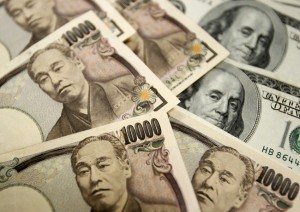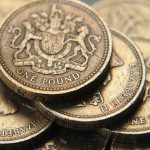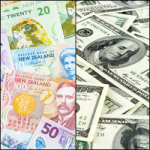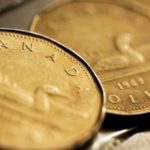 US dollar climbed to highs unseen in four months against the Japanese yen on Thursday, after Bank of Japan (BoJ) decided to leave its benchmark rate unchanged, while the divergence between monetary policies of Japan and the United States caused the gap between yields on government bonds to widen the most since September.
US dollar climbed to highs unseen in four months against the Japanese yen on Thursday, after Bank of Japan (BoJ) decided to leave its benchmark rate unchanged, while the divergence between monetary policies of Japan and the United States caused the gap between yields on government bonds to widen the most since September.
USD/JPY touched a session high at 100.83 at 7:15 GMT, also the pairs highest point since July 19th, after which consolidation followed at 100.78, rising 0.74% for the day. Support was likely to be received at November 20th low, 99.80, while resistance was to be encountered at July 19th high, 100.86.
At its meeting on policy today Bank of Japan left its benchmark interest rate unchanged at current record low level of 0.10% in consonance with expectations, with the central bank striving to achieve its 2% inflation objective in 2015.
The bank also kept its pledge to increase nations monetary base by 70 trillion JPY (695 billion USD) per year at the meeting, as has been projected by economists. The decision on policy came only three weeks after banks last meeting and has been reached after an unanimous vote. The outlook over economy has been left without change, with recovery going at a moderate pace and exports – increasing. According to BoJ, business investments in the country expanded, while corporate bonds climbed.
BoJ policymakers are “still sticking to their guns on their inflation target and they’re prepared to do more if required,” Greg Gibbs, a Singapore-based currency strategist at Royal Bank of Scotland Group Plc, said before the rate decision, cited by Bloomberg. “Technically, it’s looking like it’s moving toward a weaker yen.”
The extra yield, which 10-year US government bonds offered over their 10-year Japanese counterparts reached 2.19% on Wednesday, or the most since September 12th.
Bank of Japans decision followed the release of the preliminary manufacturing PMI for China by HSBC Holdings Plc and Markit Economics, as the index came in at a reading of 50.4 in November, below forecasts of a value of 50.8, and slowing down in comparison with the final value registered in October, or 50.9.
Meanwhile, the US dollar received support after the publication of the minutes of Federal Reserve Banks policy meeting in October on Wednesday. It revealed that central banks policymakers “generally expected” employment data, coming out of the United States to improve, as this would “warrant trimming the pace of purchases in coming months.” The bank currently purchases 85 billion USD of Treasuries and mortgage-backed securities each month. According to the minutes, Federal Open Market Committee (FOMC) members also underscored that the Quantitative Easing is entirely dependent on economic data. A possible tapering of asset purchases may occur when data pointed that US economy was picking up the pace.
The greenback received a boost yesterday also after the Department of Commerce reported that retail sales in the United States rose 0.4% in October compared to a month ago, marking the fastest monthly pace in three months and outperforming expectations of a 0.1% gain. September’s result has been revised up to a flat performance from a 0.1% dip previously.
Elsewhere, the yen was losing ground against the euro, with EUR/JPY cross up 0.68% on a daily basis to trade at 135.36 at 7:57 GMT. GBP/JPY pair was also gaining, up 0.61% to trade at 162.13 at 8:00 GMT. Japanese yen has plunged 12% during this year, or the worst performance among the 10 developed-nation currencies, which are tracked by Bloomberg Correlation-Weighted Indexes. The US dollar has climbed 4.1%, while the euro has demonstrated the best performance within the group, advancing 6.1% during the same period.





